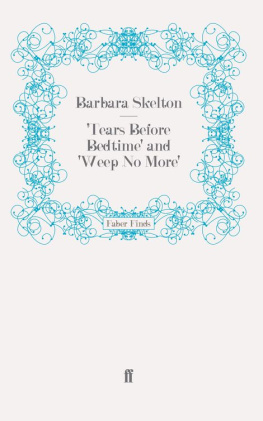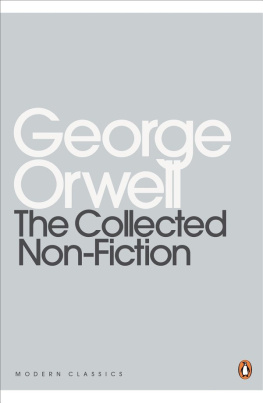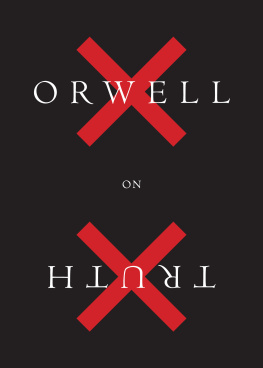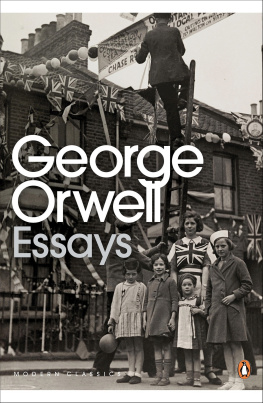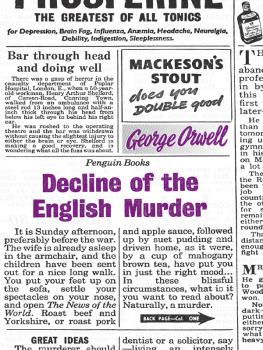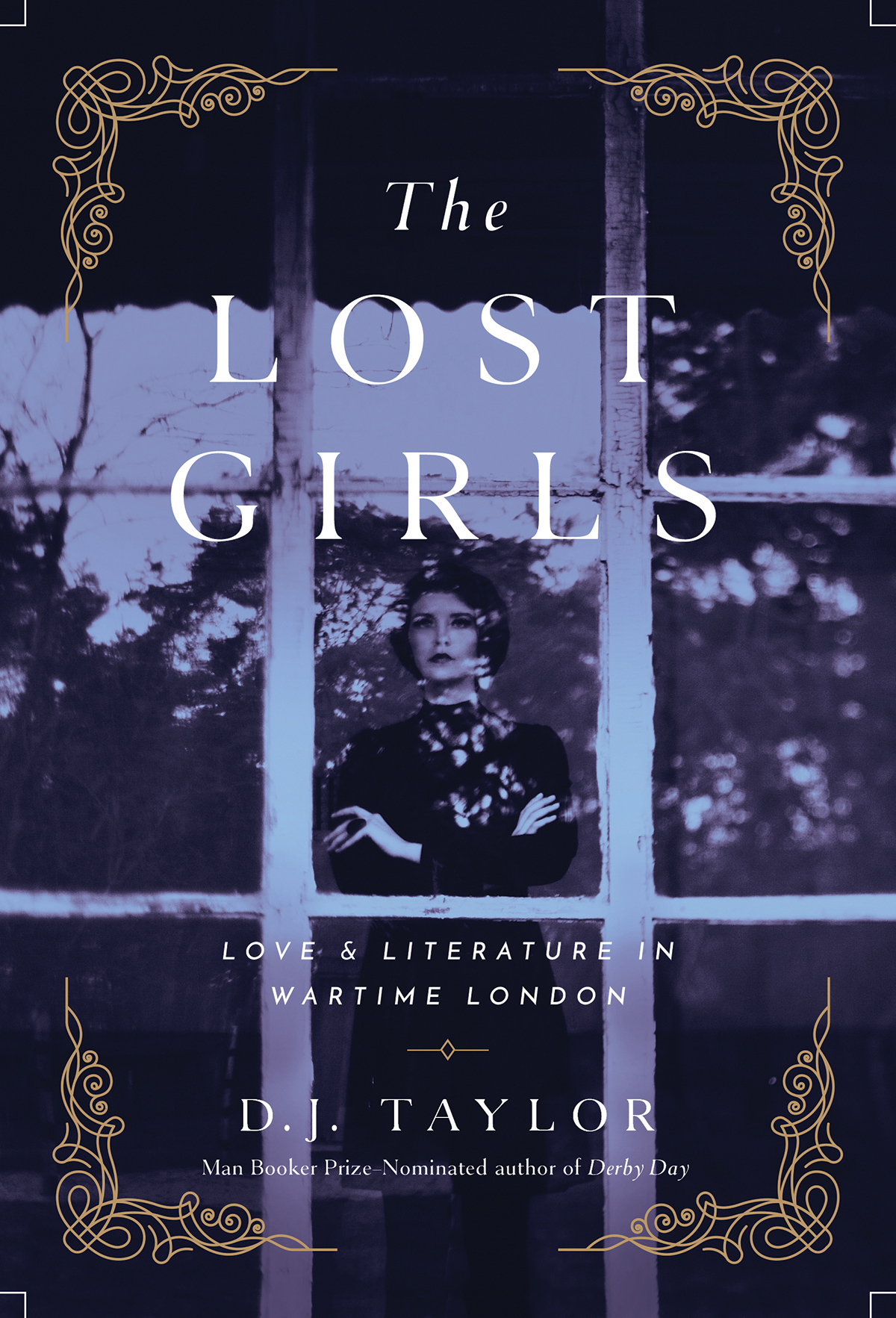Contents
Guide
Page List
The
LOST GIRLS
LOVE & LITERATURE IN WARTIME LONDON
_______________
D.J. TAYLOR
For Nicky Loutit
Contents
One mark of the Lost Girls complex emotional lives is the number of surnames they managed to accumulate. Lys was, successively, Lys Dunlap, Lys Lubbock, Lys Connolly (by deed poll) and Lys Koch. Barbara began life as Barbara Skelton before re-emerging as Barbara Connolly, Barbara Weidenfeld and, ultimately, Barbara Jackson. Sonia was born Sonia Brownell, became Sonia Orwell (very occasionally Sonia Blair) and was briefly known as Sonia Pitt-Rivers. Janetta was at various times addressed as Janetta Woolley, Janetta Slater, Janetta Sinclair-Loutit (by deed poll), Janetta Kee, Janetta Jackson and, finally, as Janetta Parlad, strictly speaking the Marquesa de Apezteguia. To avoid confusion, I have tended to refer to them simply as Lys, Barbara, Sonia and Janetta.
For a rough estimate of their contemporary worth, the sums of money mentioned here need, depending on the year involved, to be multiplied by a factor of between 50 and 60. Thus Janettas 10 monthly allowance from her mother in 1939 would be bring in something over 600 in 2019. The fee for a 3000-word short story published in Horizon (6 guineas) in the early 1940s would be around 300. Janettas wedding present from her father (50) when she married Hugh Slater would be the equivalent of 2750.
Lys, aged twenty-one. Clerical worker and part-time model. Known for her exceptional beauty. Married to Ian Lubbock, an aspiring actor.
Janetta, aged seventeen. Recently left her mothers house in the south of France and eloped to Geneva with a much older man.
Barbara, aged twenty-three. Model and poule de luxe. Currently living at an address in Kinnerton Street, Mayfair, and at her cottage (the Cot) in Hastingleigh, Kent.
Sonia, aged twenty-one. Nicknamed the Euston Road Venus. Involved in a relationship with the (married) artist William Coldstream.
Glur (Joyce Warwick-Evans), aged twenty-two. Former model. Married to the writer and part-time advertising man Peter Quennell.
Angela, aged twenty-seven. Janettas half-sister. Known for her erratic behaviour. Currently married to the society columnist Patrick Balfour.
Diana, aged twenty-four. Daughter of the proprietor of a printing firm. Involved in a relationship with Cyril Connolly.
Joan, aged twenty-seven. Daughter of Viscount Eyres-Monsell, former First Lord of the Admiralty. Recently married to the journalist John Rayner. Photographer. Friend of Cyril Connolly.
Anna Kavan (the pseudonym of Helen Emily Woods), aged thirty-eight. Writer. About to publish her ground-breaking novel, Asylum Piece. Travelling abroad, possibly in America.
Cyril Connolly, aged thirty-six. Critic and man of letters. Author of a novel, The Rock Pool (1936) and a work of non-fiction, Enemies of Promise (1938). Married to Jean Bakewell, an American heiress. Film critic of Time and Tide.
George Orwell (pseudonym of Eric Blair), aged thirty-six. Spanish Civil War veteran. Author of four novels, the most recent, Coming Up for Air, published in August 1939. Married to Eileen OShaughnessy and running a small grocers shop in Wallington, Hertfordshire.
Evelyn Waugh, aged thirty-five. Novelist and travel writer. Author of among other novels Decline and Fall (1928), Vile Bodies (1930) and A Handful of Dust (1934).
Nancy Mitford, aged thirty-four. Eldest of the five daughters of Lord and Lady Redesdale. Author of three novels, including Highland Fling (1931). Friend of Waugh and Connolly.
Lucian Freud, aged sixteen. Grandson of Sigmund Freud. Studying at the East Anglian School of Art and Drawing at Dedham, Essex.
Peter Quennell, aged thirty-four. Poet, critic and advertising copywriter. Currently married to his third wife, Glur. Friend of Connolly.
Peter Watson, aged thirty-one. Son of Sir George Watson Bt, margarine millionaire. Art collector and philanthropist.
Feliks Topolski, aged thirty-two. Artist. Of Polish origin, but resident in Britain since 1935. Illustrator of plays by George Bernard Shaw.
Kenneth Sinclair-Loutit, aged twenty-six. Doctor. Spanish Civil War veteran. Married to Thora Silverstone.
Stephen Spender, aged thirty. Poet and critic. Author of Forward from Liberalism (1937). Recently divorced from his first wife, Inez Pearn. Member of the Communist Party. Friend of Connolly and Watson.
Brian Howard, aged thirty-four. Dandy, aesthete and former Bright Young Person. Author of a book of poems, God Save the King (1931). Currently living in the south of France.
Frances, aged thirty-nine, and Ralph Partridge, aged forty-five. Second-generation members of the Bloomsbury Group. Living at Ham Spray, Wiltshire, formerly the home of Lytton Strachey. Friends of Janetta.
Julian Maclaren-Ross, aged twenty-seven. Author and former vacuum-cleaner salesman. Known for his erratic behaviour. Living in near destitution in Bognor Regis.
Robert Kee, aged nineteen. Studying at Magdalen College, Oxford.
Farouk bin Faud, aged nineteen. King of Egypt.
Introduction:
An Evening in Bedford Square
What, in short, was the point of Connolly? Why did people put up with frequent moroseness, gloom, open hostility? Why, if he were about in the neighbourhood, did I always take steps to get hold of him? The question is hard to answer. The fact remains that I did...
Anthony Powell, Infants of the Spring (1976)
I t is just past seven oclock on a rainy evening in the early part of September 1942 and twilight is falling over the Bloomsbury pavements. Here in the fourth year of war, Bedford Square is not looking its best. The railings from the vast private garden in its centre have been taken away, supposedly to be made into Spitfires, and half-a-dozen allotments have risen to displace the lawn on the northernmost side. Over on the western quadrant comes direct evidence of armed conflict: a bomb crater dating back to the early part of the Blitz and still not filled in, and several piles of rubble, so ancient now that there are knots of wild flowers growing out of the bare earth. Two or three of the houses are derelict, with boarded-up windows and notices tacked to the front doors advising alternative arrangements for post. The air-raid wardens are on the prowl there is a wardens post over on the corner of Gower Street and all over the square the soft light gleaming from the frontages is being extinguished as the blackout curtains go up.
Reaching the squares north-eastern corner, on her way down Gower Street from the Underground station at Euston Square, Naomi stops to take her bearings. She is less than familiar with this part of the capital, or indeed with any part of it beyond the square mile or so around London Wall, where she works as a copy-typist for a firm of veneer and inlay importers. She is a tall, nervous-looking, red-haired girl in her very early twenties, and rather nonplussed at the prospect of the social experience that lies before her. Nevertheless, in the pocket of her Aquascutum mackintosh is a gilt-edged invitation card on which has been printed the words MR CYRIL CONNOLLY: HORIZON: AT HOME, the days date and an address, and Naomi is determined to put it to good use. Truth to tell, Naomi is not quite sure why she has come in search of the flat in Bedford Square, where Mr Cyril Connolly is at home, rather than going back to her parents house in Shepperton. George, an apprentice compositor for the printing firm that Mr Connolly employs, and the source of the invitation, had said it would be a lark and that afterwards they could go and have supper at a Lyons. But now George has gone down with influenza, leaving Naomi to make the journey on her own.


